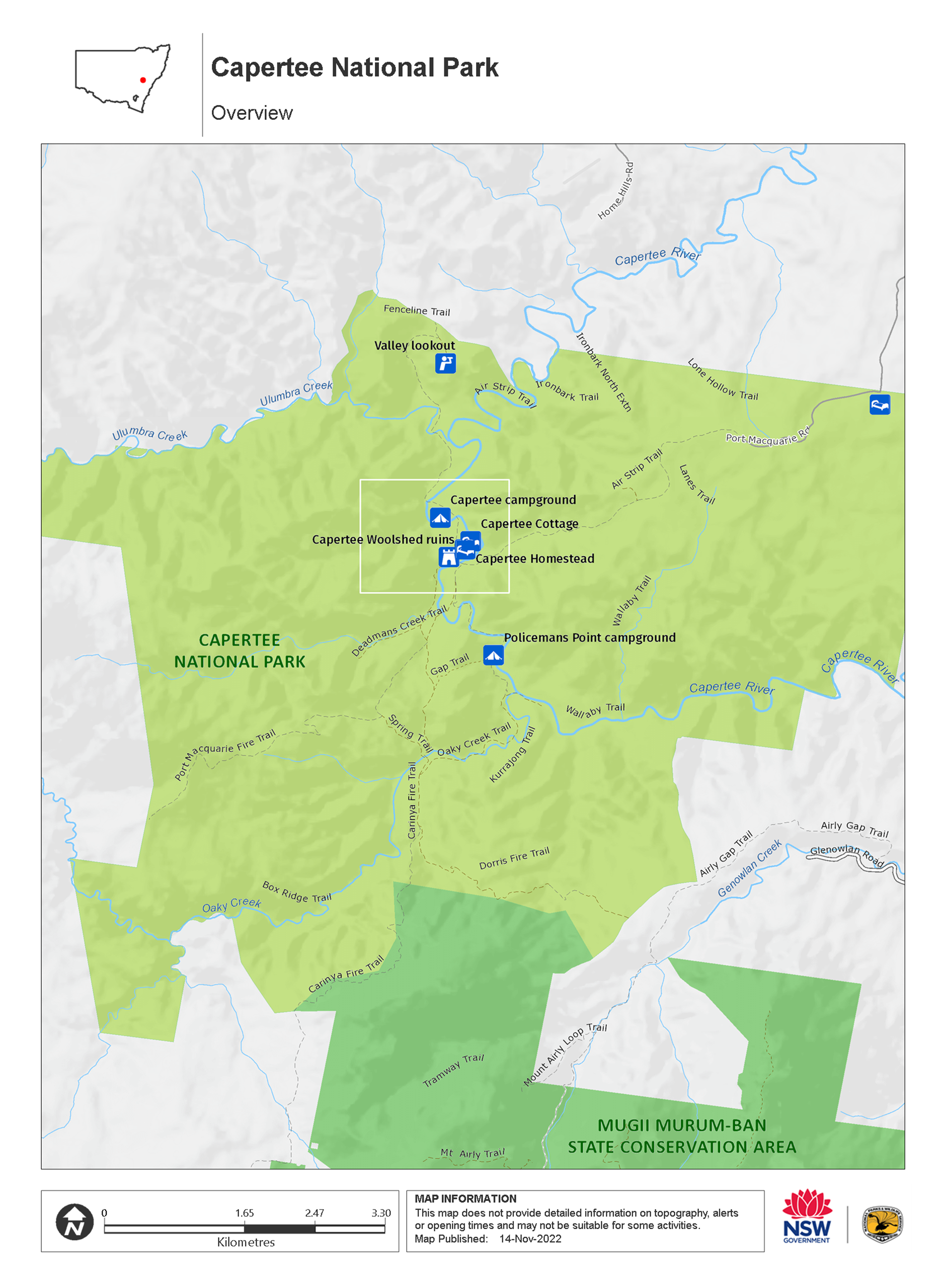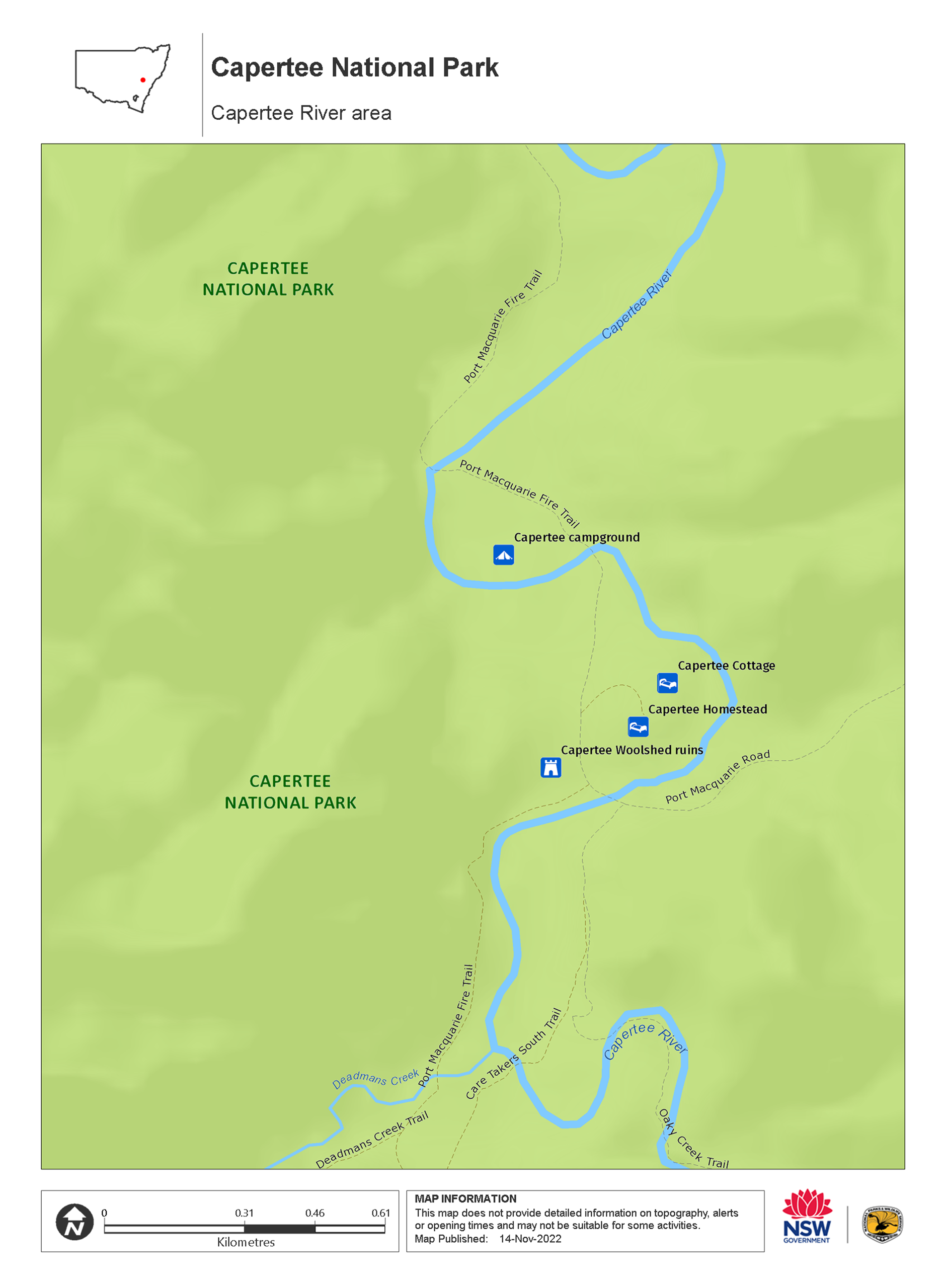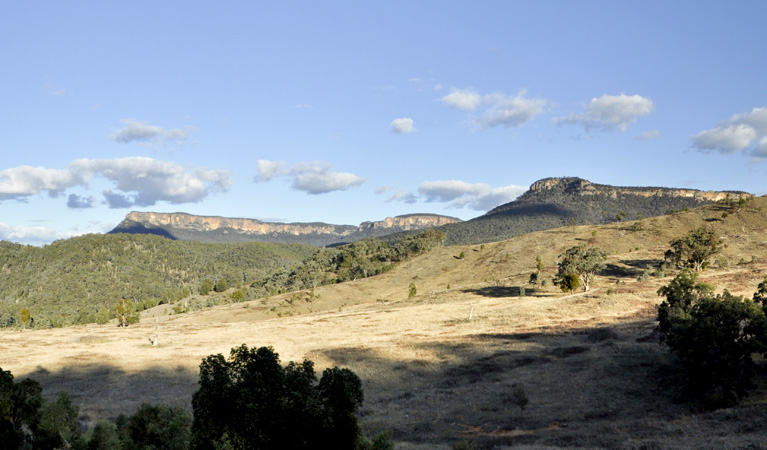Capertee National Park
Overview
Capertee National Park offers spectacular birdwatching, walking, camping as well as heritage homestead accommodation, west of Blue Mountains, near Lithgow.
Read more about Capertee National Park
For a unique wilderness holiday, head to Capertee National Park. Located west of Blue Mountains, Capertee protects a range of wildlife and plants found nowhere else on earth. Independent campers and adventurous families enjoy walking and mountain biking through this unique region while discovering both Aboriginal and European heritage.
Renowned for some of the best birdwatching in the state, the protected woodlands along the fertile river flats attract regent honeyeaters, woodland birds, and birdwatching enthusiasts alike. The park is also home to native Australian wildlife like kangaroos, wallaroos, wallabies and gliders.
Choose from a night under the stars at the campground, or enjoy the heritage charms of Capertee Homestead. Capertee National Park is also a great stopover if car touring around neighbouring Turon National Park and Gardens of Stone National Park.
Local alerts
For the latest updates on fires, closures and other alerts in this area, see https://www.nationalparks.nsw.gov.au/visit-a-park/parks/capertee-national-park/local-alerts
Contact
- in the Sydney and surrounds and Country NSW regions
Capertee National Park has a locked entry gate. If you're visiting during the day, get the gate code by calling Mudgee Office (weekdays) or Blue Mountains Heritage Centre (weekends).
-
-
Mudgee office
02 6370 9000
Contact hours: Monday to Friday, 9am to 4:30pm. - 27 Inglis Street, Mudgee NSW 2850
-
Email: npws.mudgee@environment.nsw.gov.au
-
Mudgee office
Visitor info
All the practical information you need to know about Capertee National Park.
Map

Map legend

Map

Maps and downloads
Nearby towns
Rylstone (34 km)
Rylstone is a pretty village with many heritage-listed stone buildings, including the magnificent post and telecommunications office, the police station, the courthouse and the shire hall. Boutiques and markets offer arts, crafts and other treasures.
Mudgee (91 km)
Set in the Cudgegong River valley in Central West NSW, Mudgee is a charming historic town and a popular destination for wine enthusiasts keen to sample its award-winning reds and whites. From its many wineries and national parks to markets, festivals and activities for the kids, Mudgee has much to offer.
Lithgow (125 km)
Hassans Walls Lookout, near Lithgow, is the highest in the Blue Mountains. Admire Mt Wilson, Mt York, Mt Tarana and Mt Blaxland as well as the pretty Hartley Valley below. To the south are the Kanimbla and Megalong valley and Mt Bindo. While there, go for a walk or ride around the lookout.
Learn more
Capertee National Park is a special place. Here are just some of the reasons why:
Wiradjuri country

Capertee National Park is within the traditional lands of Wiradjuri People. The surrounding countryside contains evidence of Aboriginal occupation in the form of rock art, scarred trees and artefacts. Traditional food plants and old travel routes are also present within the park.
Plant life abounds

The park is home to rare grey grevillea shrubs, which bloom with pink and red flowers in spring. This hardy, dense shrub is found nowhere else but Capertee Valley. Fertile river flats and surrounding slopes host an ecological community of majestic yellow box, blakelys red gum and white box, providing a vital habitat for wildlife and native birds.
- Capertee Woolshed ruins Capertee Woolshed ruins, in Capertee National Park, offer a view of the historic heritage of the area, with walking, paddling and birdwatching opportunities nearby.
- Valley lookout Relax with a picnic lunch at Valley lookout and enjoy dramatic views inside the world’s second largest canyon. It’s easily combined with a 4WD or camping getaway in Capertee National Park, near Rylstone.
Looking for things to do in Capertee?

There are great things to do when in Capertee. Enjoy fantastic bird watching any time of the year - the protected woodlands attract the threatened gang-gang and glossy black cockatoos, and Capertee Valley is one of only three known nesting areas for the endangered regent honeyeater. You'll find a range of options if you're looking for a place to stay, including Capertee Homestead, Cottage or campground. Bookings essential. You can also hike into remote Policemans Point campground.
- Capertee Woolshed ruins Capertee Woolshed ruins, in Capertee National Park, offer a view of the historic heritage of the area, with walking, paddling and birdwatching opportunities nearby.
- Valley lookout Relax with a picnic lunch at Valley lookout and enjoy dramatic views inside the world’s second largest canyon. It’s easily combined with a 4WD or camping getaway in Capertee National Park, near Rylstone.
Plants and animals protected in this park
Animals
-

Regent honeyeater (Anthochaera phrygia)
The regent honeyeater is a critically endangered native bird. Once widespread across south-eastern Australia, only around 250 to 350 birds remain in the wild, making it at risk of extinction.
-

Swamp wallaby (Wallabia bicolor)
The swamp wallaby, also known as the black wallaby or black pademelon, lives in the dense understorey of rainforests, woodlands and dry sclerophyll forest along eastern Australia. This unique Australian macropod has a dark black-grey coat with a distinctive light-coloured cheek stripe.
-

Sugar glider (Petaurus breviceps)
The sugar glider is a tree-dwelling Australian native marsupial, found in tall eucalypt forests and woodlands along eastern NSW. The nocturnal sugar glider feeds on insects and birds, and satisfies its sweet tooth with nectar and pollens.
-

Bare-nosed wombat (Vombatus ursinus)
A large, squat marsupial, the Australian bare-nosed wombat is a burrowing mammal found in coastal forests and mountain ranges across NSW and Victoria. The only other remaining species of wombat in NSW, the endangered southern hairy-nosed wombat, was considered extinct until relatively recently.
Education resources (1)
What we're doing
Capertee National Park has management strategies in place to protect and conserve the values of this park. View the detailed park and fire management documents.

